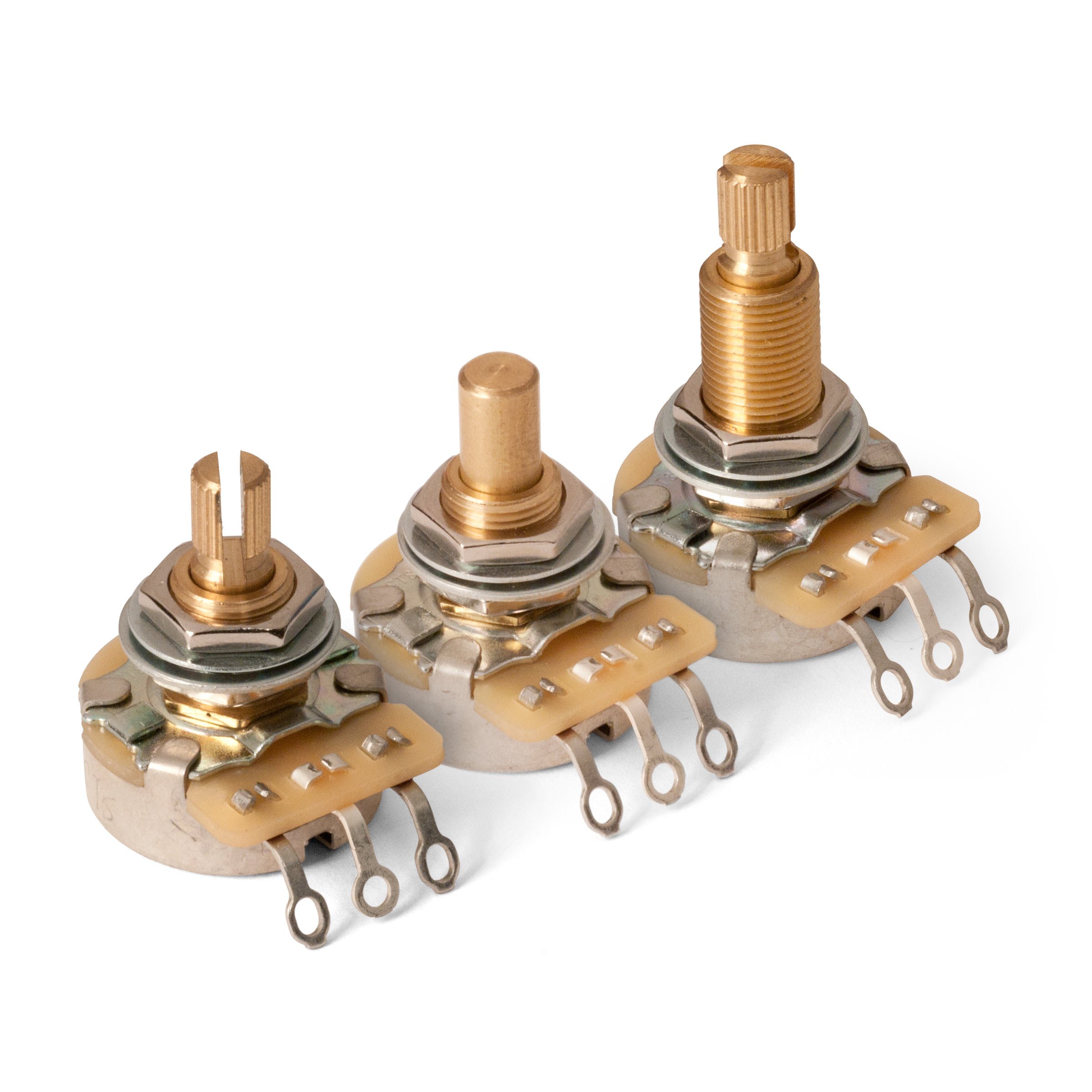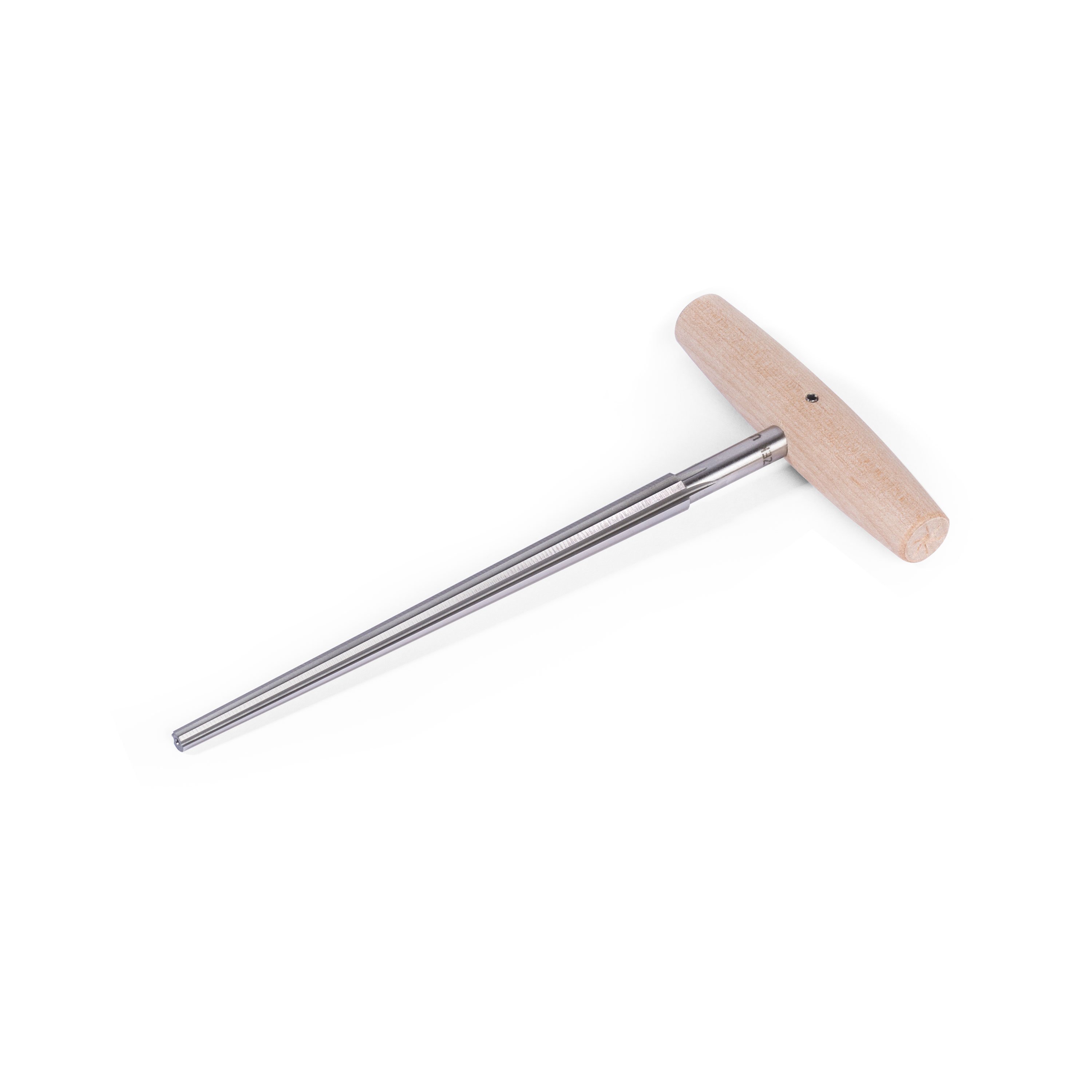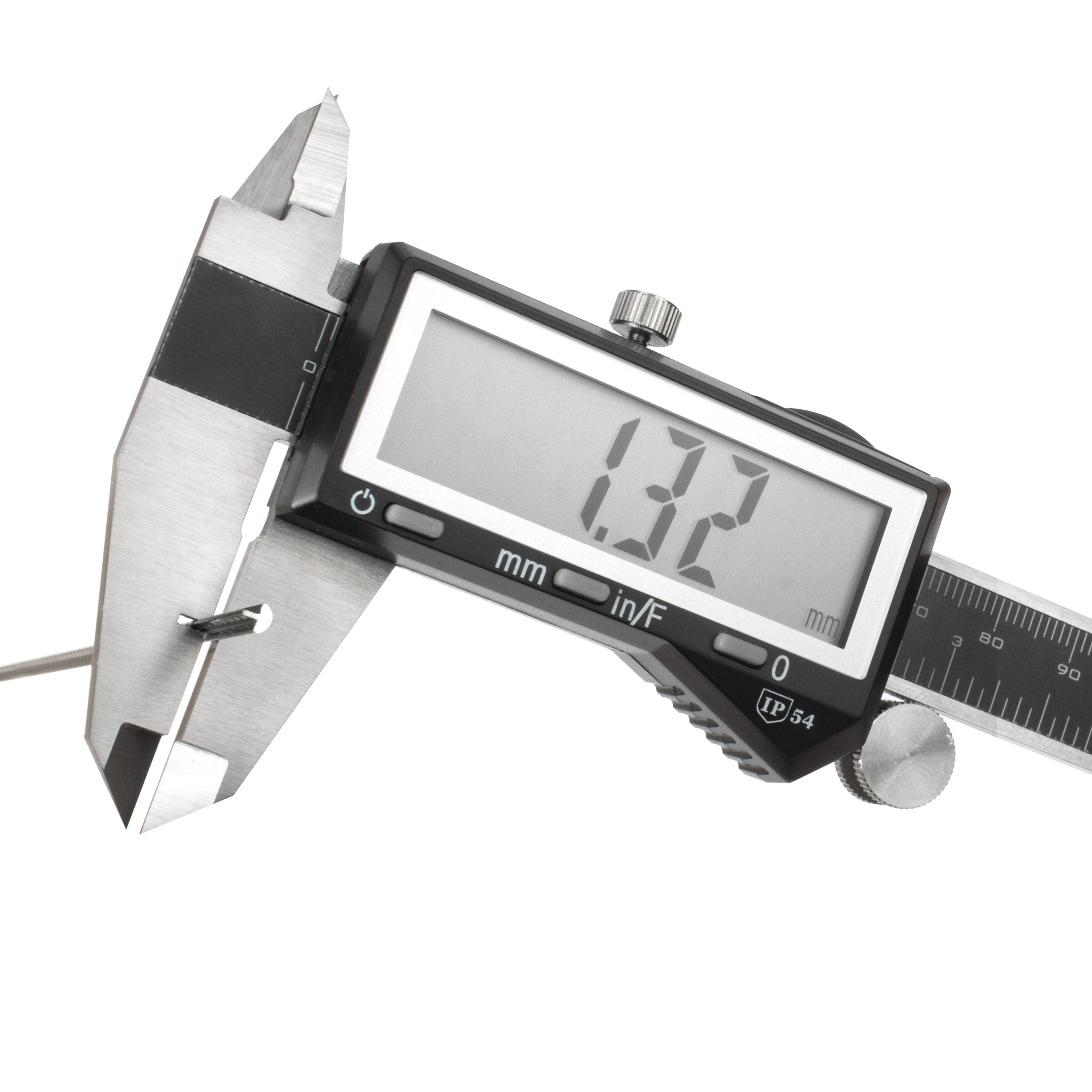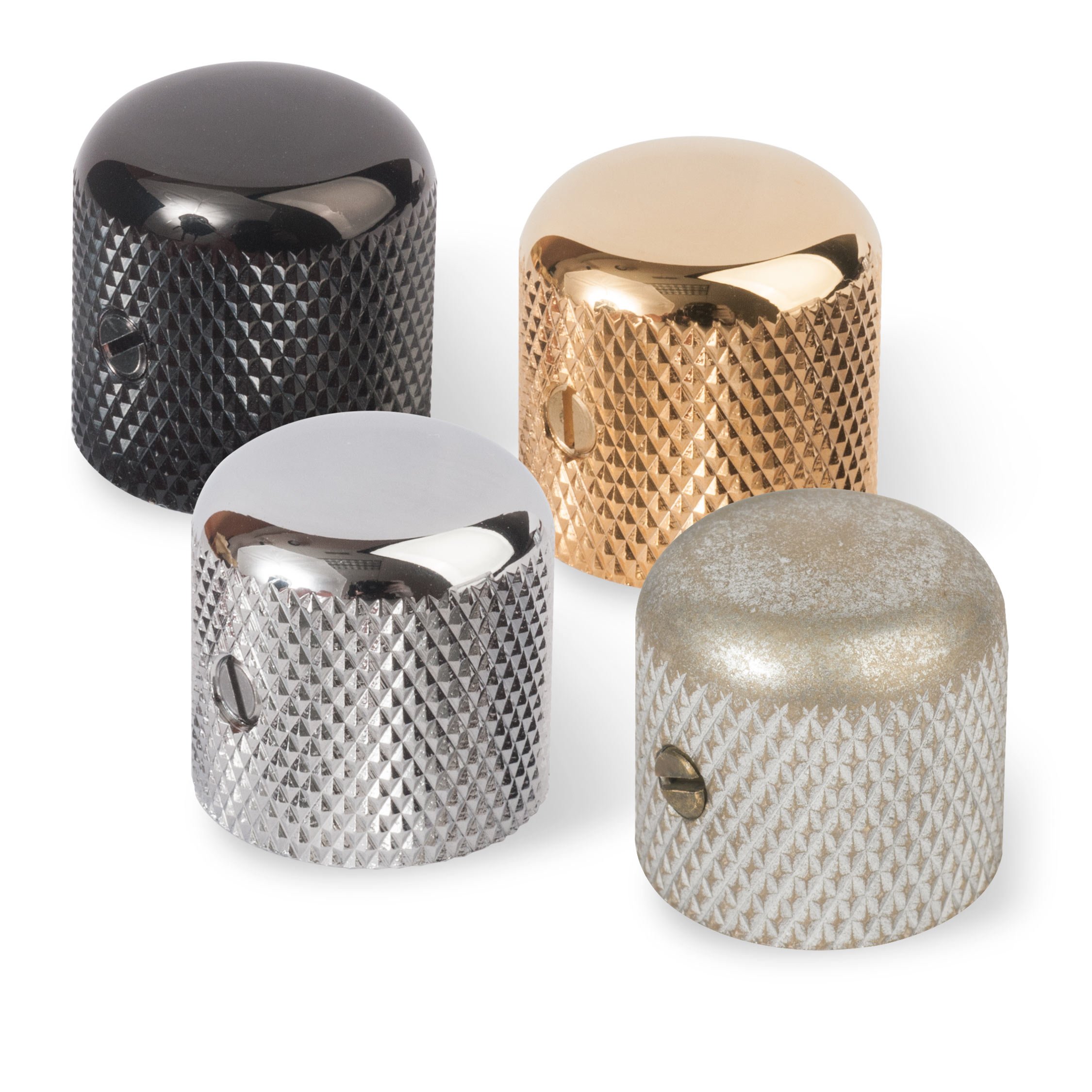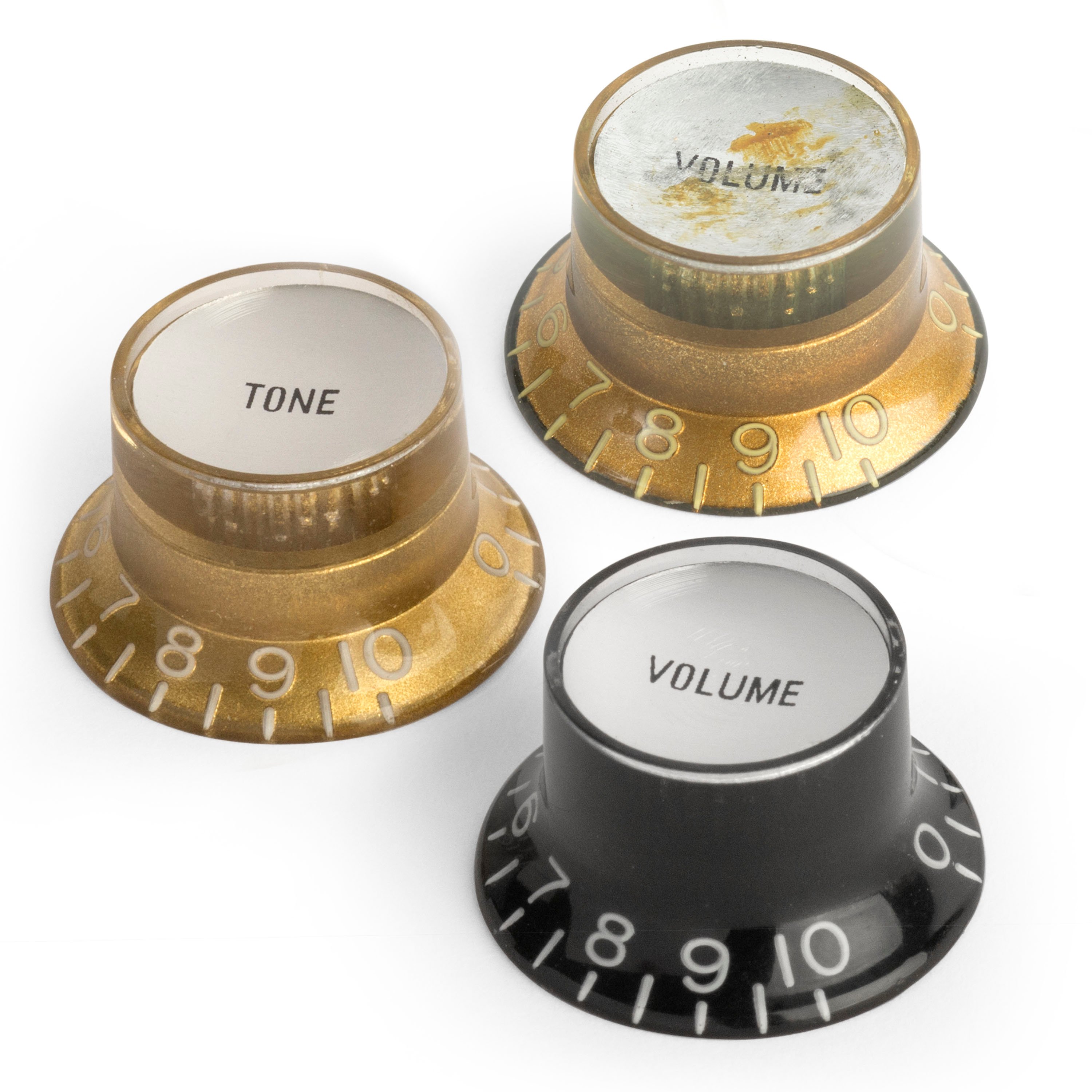Upgrading control pots: choosing the right pots and knobs
Issue 255 January 28, 2016
Lots of low-cost guitars play great, even though the manufacturers cut costs on hardware and electronics. Swapping out your control pots is an easy mod with big results. Erick Coleman shows you how to avoid trouble…
- Which pot for which sound?
- Matching the pot shaft to the knob
- Avoid ruining the pot by using back pressure
- Don't use a drill to enlarge holes for new pots
Video Transcription
[on-screen text reads: Stewart-MacDonald - Trade Secrets! Erick Coleman, Guitar Repairman]
[on-screen text reads: Replacing Your Control Pots]
Erick Coleman: There's a lot of really good, inexpensive guitars on the market these days. They look good, they play pretty good. But the areas where the manufacturers cut corners is with stuff like hardware and electronics. The stock pots are pretty small, prone to fail. They get dirty, wear out real fast.
Which pot for which sound
And so what I'm going to do here is I'm going to update these with CTS pots [on-screen text reads: CTS: "Chicago Telephone Supply" founded in 1896]. They're in a lot of guitars that you see, the high end guitars that you've seen over the last 50 or so years. One question we get quite a bit in the tech department is, what value of pot should I be putting in my guitar? In a nutshell [on-screen text reads: Brighter (harsher?) - 1Meg - 500K - 250K - Deeper (muddier?)], the higher the value, say a 500K pot, the brighter the sound that you're going to hear coming out of the instrument. The wrong choice of pot can mean the difference between a bright shrill sound that's abrasive to the ears, or a muddy sound that has no body or life at all.
On a guitar like a Fender Telecaster or Stratocaster like this, you've got single coil pickups [on-screen text reads: Single-coils typically call for 250K pots] with a narrow magnetic field and kind of a bright tone. So more often than not, you're going to see 250K pots used to kind of tame the top end of these guys. Gibson guitars, which are often loaded with P-90s or Humbuckers [on-screen text reads: Humbuckers want 500K pots to keep from losing brightness], and they use 500K to pull up the full range of the pickup because some of these style of pickups, depending on the design or the winds on them, they can get kind of muddy. So they put in 500Ks just to bring a little more oomph out of the instrument. Then you have other kind of pickups like the Jazzmaster. It's another Fender guitar. By and large, the same pickup design as a Stratocaster in the Telecaster, but the coil's got a wider magnetic field and it's not quite as tall this way.
And so they utilize 1MEG pots in there to bring out the full range of the pickup [on-screen text reads: 1MEG pots retain even more highs]. And we also sell a 25K pot, but that's usually reserved for specialty circuits like acoustics or active electronics. The cool thing about tone is it's really a matter of personal preference [on-screen text reads: Erick's favorite P-90 pickups with 500K pots and Emerson paper-in-oil caps], so you can feel free to experiment with the different pot values to determine what sounds best to your ears.
Modifications required for import guitars
Another question we get frequently is, are any modifications necessary to my instrument to install the CTS pots? And the answer to that is yes. Typically with the import guitars, the guitars require a 5/16" inch mounting hole, which is too small for the 3/8" that is necessary for the CTS. On a plastic pickguard like that, easy work of that is to just walk it over to the drill press to open those up.
I've opened up these holes to 3/8". Now I've got a perfect fit. These pots are ready to install.
Modifications required for solid top guitars
Now a drill press isn't something that I'd want to use on a solid top instrument like a Les Paul or SG or something because the drill bit could catch on the grain of the wood and just chip these holes out and chip the finish out and make a really ugly mess of it.
Before I take the reamer to the guitar, I'll take my micrometer [on-screen text reads: Luthier's Digital Caliper - stewmac.com] set to three eighths of an inch and I'll mark where that goes on the reamer. And I mark it out with a Sharpie so I don't overshoot and make my hole bigger than I want it to be [on-screen text reads: Peghole Reamer (large) - stewmac.com]. Doesn't take much. Go slow, working towards my depth stop mark. And I just ream right down to my line. I'm going to stop right there.
Nice clean hole, opened up to the proper diameter. Now the next thing to think about on an instrument with a solid top like this is top thickness. Some instruments have much thicker tops than others. So you'll need to measure that distance between the control cavity and the top of the guitar to determine if you need a long shaft pot or not [on-screen text reads: Long-nose Pliers - stewmac.com]. To make this little gauge, just take a section of guitar string, bend it over to an L shape. You can then fit that into the hole there. Run your finger up to the edge. And the top on this one's a quarter inch thick. So that tells me that I'll be able to use a standard length CTS pot for this [on-screen text reads: Guitar Nutdrivers - stewmac.com].
Installing new knobs
I've enlarged the holes and installed the new pots. And the next question that usually comes up is, can I use my old knobs with the new pots? And in most cases, the answer to that question is no. On instruments like P basses and Telecasters that use knobs that install with a set screw, imported versions usually have a six millimeter shaft, but the new CTS has a quarter inch. So if you go to try to install your old knobs, they're just going to kind of fall off. They're not going to fit at all. So it's important that you buy the right knob to fit the shaft.
And with a split shaft pot, you have little knurling around there that match the splines on the inside of the pot. For a nice fit, it's held on by friction. Split shaft pots on most all imported guitars have course neural shafts machined with 18 splines. If you count the splines, you'll probably only see 16 because cutting the slot through the shaft removes two of the splines. Inside the matching knob are 18 splines. CTS pots are knurled with 24 splines before cutting the slot. So if you're counting, you'll see about 20. 10 per side. The knobs are molded with 24 splines.
Even with the correct knurling, it is possible to push the rear housing off of the pot when you're putting on a knob that might be particularly stubborn like this customer guitar that came in last week. So to prevent that from happening, what I like to do is apply a little pressure to the back of the pot with my thumb while I'm pushing the knob on to seat it. The knob is seated just right and the back of the pot is still intact. Occasionally you'll get a knob that just spins on the shaft.
And the last thing in the world you want to do is go stick in a screwdriver in here and prying that apart. Because this is really a pretty delicate piece and it's easy to pop one side of that knurling off. So what I like to do instead of that, is put a little piece of paper tape over that. Don't forget to apply your back pressure.
It'll push the knob right on. There we go. Working just like it should. The flip side of that is occasionally you will find a knob that is just too tight going on. Even with back pressure there's a possibility of shattering as you're seating it. So some people will try to squeeze these together and that's dangerous because as you know, it can break. So what I like to do is use a 56 thousandths feeler gauge. The slot on the pot is about 60, 65 thousands [on-screen text reads: Gauged Nut Slotting File - stewmac.com]. I'll put this in here as a stop. I'll use my pliers to just gently squeeze it a little bit together without squeezing it together so tight that it's going to break. That reduces the diameter just enough for an easy fit.
Okay, I've closed the hood on this guy, and it's ready to go back to the Stewart's Opera House after school program. Upgrading your pots is simple if you remember to check your pots, your knobs, and the hole sizes that they're fitting into.

